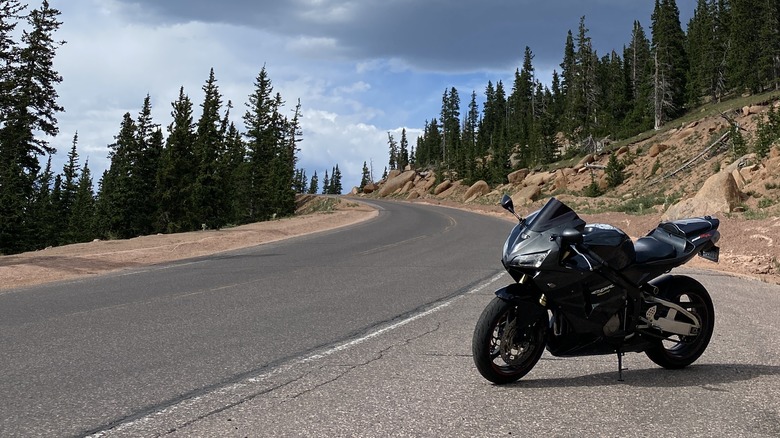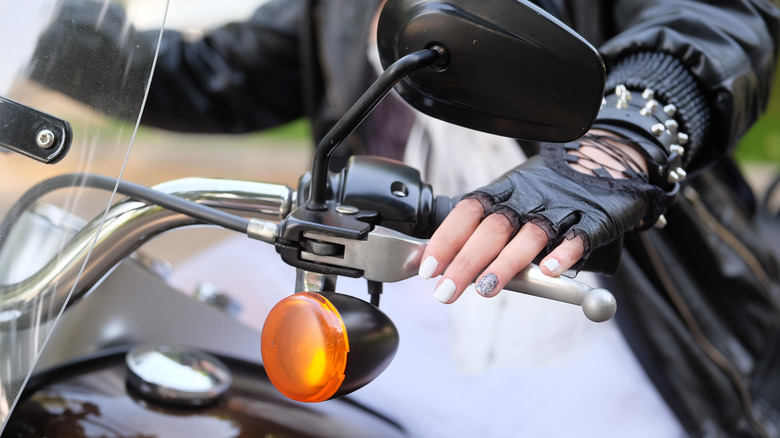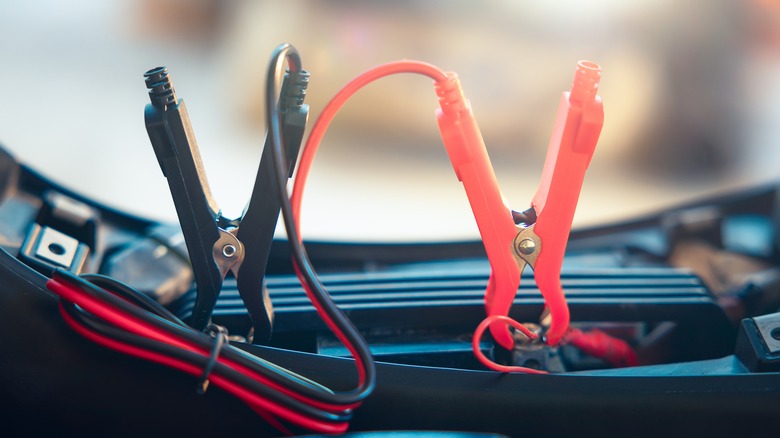How To Push Start A Motorcycle With A Dead Battery
My Honda CBR600RR died at the top of Pikes Peak in Colorado. I was stuck behind a ponderous minivan with a driver who was struggling with the concept of a parking lot. Combine the snail's pace of the family hauler in front of me with the lack of oxygen at 14,115 feet above sea level and my motorcycle couldn't keep the proper mixture of fuel and air, so it died. No worries, just hit the start button and keep going, right? Wrong.
The battery in my motorcycle was a few years old, and my alternator wasn't keeping it properly charged. I knew this was an issue, and I'd been trickle-charging the motorcycle when I could, but I was on a cross-country trip, and there weren't a lot of outlets at the campsites I was frequenting. The bike had some power, but not enough to get it going again. Thankfully, I was close enough to an open parking spot, so I coasted in, took off my helmet and went to look at the view from atop the mountain. When I eventually got back to the bike, I asked two fellow riders nearby to help me out – they knew just what to do. I hopped on the bike and engaged the clutch, put it in second gear and the two strangers pushed me up to about 10 miles per hour. At speed, I dropped the clutch, the bike revved right up, and I waved as I rode off down the mountain – a perfect bump start.
How to push start your motorcycle
Push starting, also known as bump starting, is a relatively simple process. A motorcycle with a dead (or dying) battery can be push-started with the proper techniques and a bit of forward momentum. A push start uses the bike's motion to turn the engine over, just like it would in a car. To bump start, get on the bike, turn the key to the on position, engage the clutch, and put it in second gear. Point the bike downhill (or have a friend push you) and when the motorcycle has reached somewhere between 7 and 10 miles per hour, let the clutch out quickly.
If you're doing it right, this procedure will start the bike while it's in motion, but it may take a few attempts. And remember, you're in gear at this point, so the bike will keep moving forward. That's why it's important to push start while you're in a riding position and with nothing directly in your motorcycle's path. To slow or stop the bike, you'll need to treat it just like riding, so engage the clutch again, slow to a stop using the brakes and put it in neutral before lowering the kickstand.
When to push start (and when not to)
There's a long list of reasons that a push start won't help your motorcycle. If there are other mechanical reasons that it's not turning over, pushing it won't help. Also, if the battery is completely out of charge (not just low), a push start may not do the trick. If your motorcycle has an automatic transmission, it isn't a candidate for a push start – so keeping a jump-starter box nearby is always a good idea.
Before you push start your dead motorcycle, check a few critical items. Be sure your kill switch is in the proper position, make sure the kickstand is up, and ensure the key is in the proper position to start the bike. Double-checking any fuel kill switches or checking that you have fuel in the tank is never a bad idea, either. If all those items are ticked off the list, give a bump start a try. And if all else fails, give it a jump start to get going.


